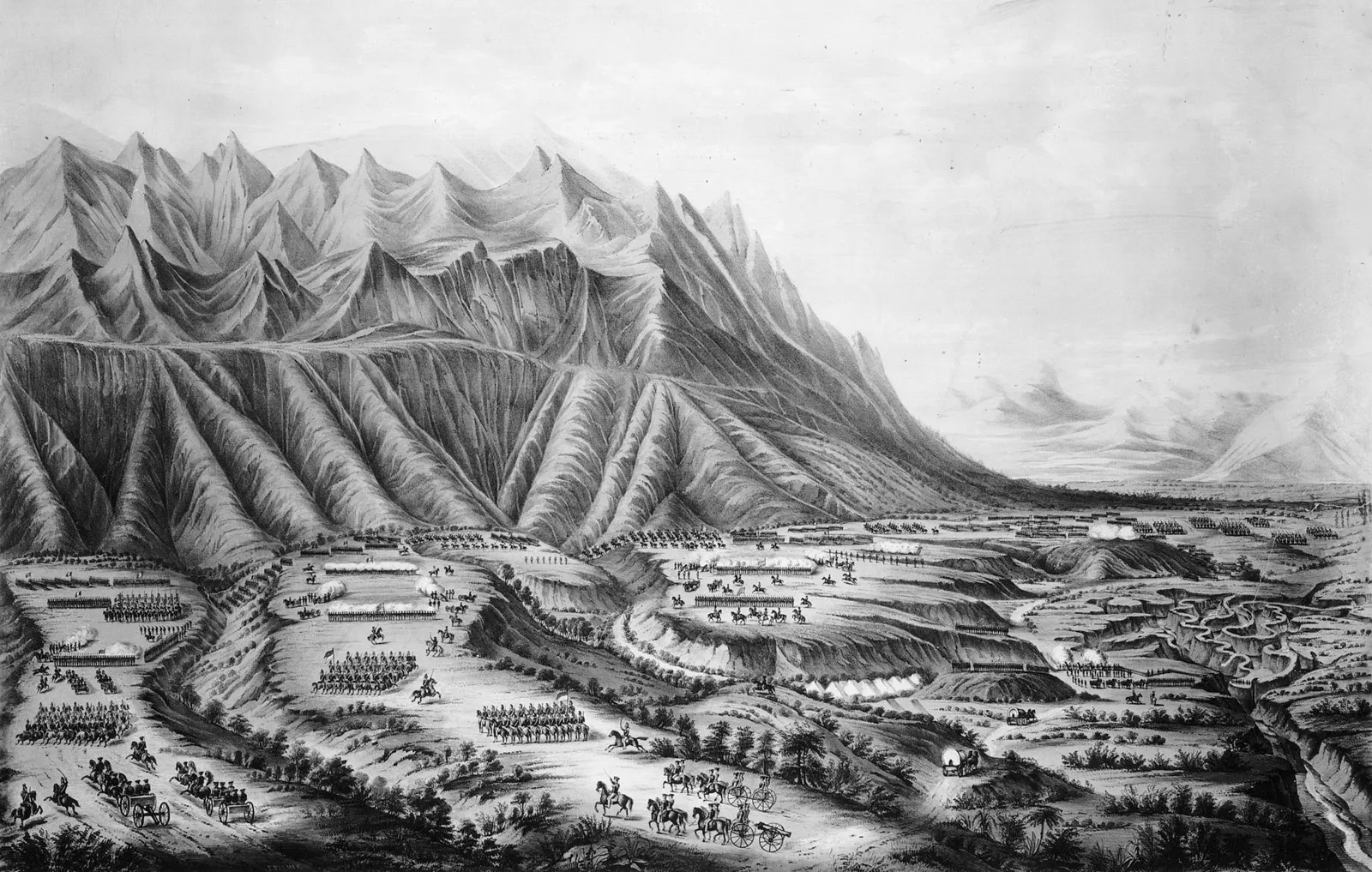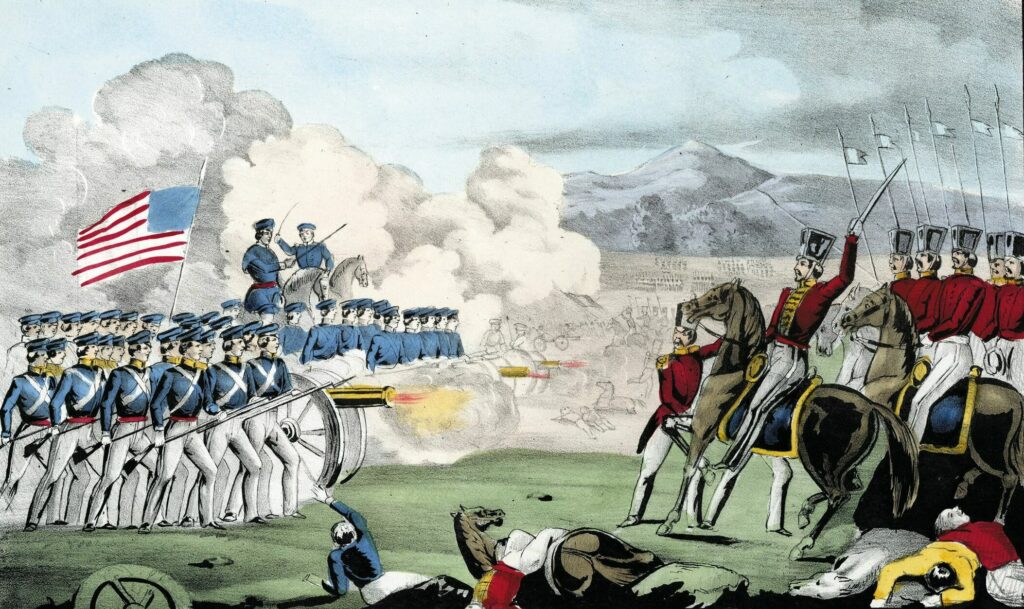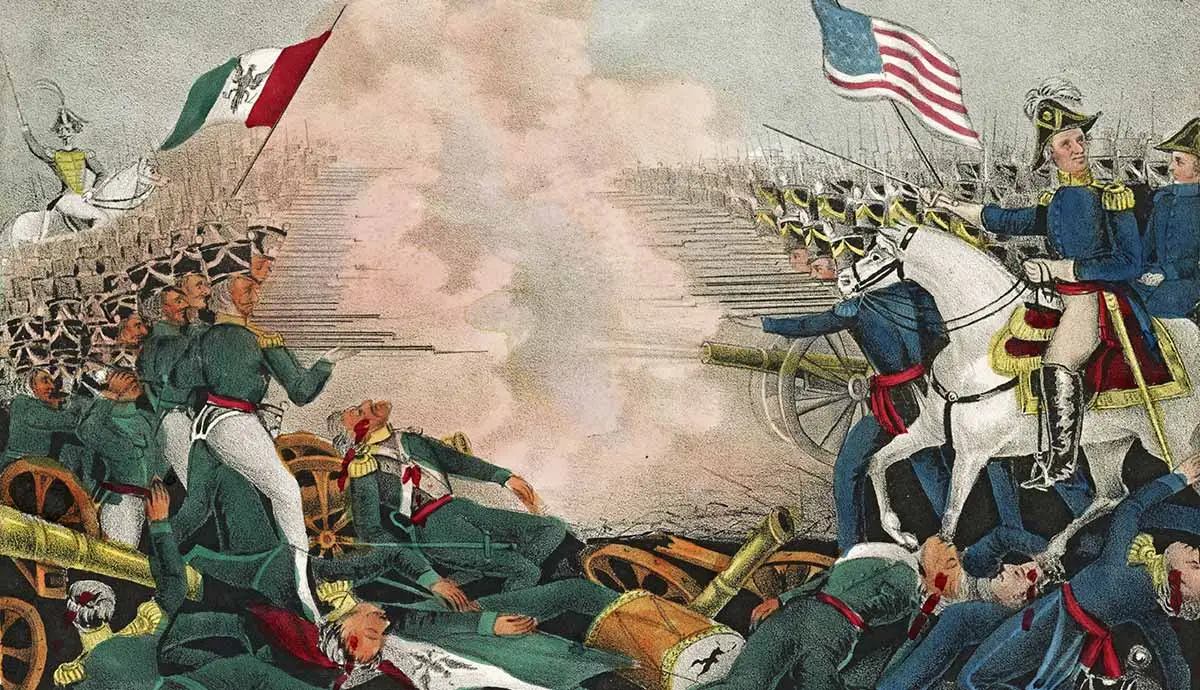The Mexican War was one of the United States’ shortest wars, and it’s a conflict that often goes overlooked in American history books. But it was one that literally shaped the country and its future in so many ways. It added more than half a million square miles to the United States, from the Rio Grande to the Pacific Ocean, establishing a southern border and creating a territory that truly spread from sea to shining sea.

It was also where many future commanders of the American Civil War would cut their teeth in the art of war, applying what they learned from the U.S. Military Academy at West Point. These notables included Thomas J. “Stonewall” Jackson, George G. Meade, George McClellan, George Pickett, Joseph E. Johnston, Braxton Bragg, Robert E. Lee and Ulysses S. Grant.
The Battle of Buena Vista: General Taylor’s Stand
At the start of the war, the Mexican claimed its border with Texas was the Nueces River, while the U.S. upheld the Texas claim that the border was the Rio Grande. Both sides knew that Americans entering the strip in between, an area of 150 miles, would likely trigger a clash. That’s exactly what happened on April 25, 1846. Congress declared war on Mexico at the request of President James K. Polk on May 13, 1846, and moved forces into the large Mexican territories of Nuevo Mexico and Alta California, which is today the American Southwest.
Gen. Zachary Taylor rushed to the border at the head of 2,400 men and twice defeated Mexican forces despite being outnumbered and far from his supply lines, first at Palo Alto and then at Resaca de la Palma. His victories forced the Mexican Army under Gen. José Mariano Arista out of Texas and back across the Rio Grande. He pushed further into Mexico, capturing Monterrey by the end of September.
Since the war plan for invading central Mexico involved capturing Veracruz on the Gulf Coast and moving inland to Mexico City, Polk ordered Taylor to stay put after capturing Monterrey. He also ordered his general to send all the veteran regular forces under his command to assist Gen. Winfield Scott in that effort. So Taylor was left with a force of fewer than 5,000 men, mostly untested volunteers.
Santa Anna’s Gamble and Mexico’s Fallout
While the United States readied its plans, Mexico called up an old favorite to come out of exile and lead the country through this war. Gen. Antonio Lopez de Santa Anna, deposed and exiled after losing Texas and control of several other Mexican states in a disputed government, returned to command Mexico’s Army. He knew about the planned landing, but instead of reinforcing the strategically vital port of Veracruz, he marched on Taylor’s force, which was now camped at Saltillo. He wanted to take advantage of the Americans’ inferior numbers.

Santa Anna would march north along a main road with more than 21,000 troops in January 1847, but the winter was one of the worst Mexico had ever seen. By the time he engaged Gen. Taylor, he would only have slightly more than 15,000 with which to attack. They met at La Angostura (“the narrow place”), roughly a mile south of Hacienda San Juan de la Buena Vista. There, the main road passed through a narrow valley which was intersected by several ravines and arroyos (dry creek beds), where the Americans set up their defense.
On February 22, Santa Anna sent his surgeon to Taylor to ask for his surrender, to which Taylor replied, “Tell Santa Anna to go to Hell!”
The attack began that day, which just happened to be George Washington’s birthday. The Mexicans led with a feint on the American right flank, but the main attack was to come on the left flank, where Santa Anna hoped to crush the Americans and roll up the entire Army. Mexican cavalry was supposed to capture Buena Vista and cut off any hope of retreat. But when the Mexicans moved to flank them, the Americans just extended their lines and moved to higher ground, preventing the Mexicans from rolling up their left flank.
As darkness fell the first night, the shooting stopped. In the morning, the Mexican cavalry did succeed in breaking through American lines and moving on to Buena Vista. When they arrived, however, they didn’t find Taylor’s supplies; they found the hacienda heavily defended by American troops and a relief column of American cavalry. Meanwhile, Santa Anna renewed the main attack, throwing his overwhelming numbers at the Americans, who poured fire into their ranks.

Though outnumbered, the Americans were in a much better state to fight. Santa Anna launched his attack after marching 35 miles. To make matters worse, they used old flintlock Brown Bess muskets Britain had sold them after the Napoleonic Wars. The Americans were also using flintlock muskets, but theirs were newer and made with better quality. Despite their faults, the Mexican Army did such impressive work of navigating the ravines and assaulting the high ground that some American officers stood in awe of their efforts. At one point, Taylor even believed he’d been “whipped” but was determined to inflict as much damage as he could.
What saved the Americans was Santa Anna himself. He might have won the Battle of Buena Vista had he launched another attack or fought another day. He still outmanned the Americans at Buena Vista. But he believed his Army was on the verge of collapse from hunger (which was true; they had no provisions), so he marched them away on the night of February 23, 1847. Taylor, his proverbial eye blackened, didn’t pursue.
To this day, Mexico believes it won the Battle of Buena Vista and cites its captured American flags and arms as evidence of that victory. The Americans laid siege to Veracruz shortly after, capturing the city on March 29. Taylor’s perceived victory back home, against overwhelming odds, captured the imaginations of Americans and totally overshadowed Scott’s victory at Veracruz, which would help Taylor be elected president a few years later.
Santa Anna’s problems feeding his Army plagued him for the rest of the war. Mexico City fell to the Americans in September 1847. In October, Santa Anna’s Army dissolved as it began foraging for food, and the general had fought his last battle. The peace forced on Mexico in 1848 shaped the United States but also upended the balance between slave and free states, moving the country a step closer to civil war.
Read About Other Battlefield Chronicles
If you enjoyed learning about the battle of Buena Vista, we invite you to read about other battlefield chronicles on our blog. You will also find military book reviews, veterans’ service reflections, famous military units and more on the TogetherWeServed.com blog. If you are a veteran, find your military buddies, view historic boot camp photos, build a printable military service plaque, and more on TogetherWeServed.com today.

0 Comments